While I could easily write pages about how fantastic Nuremberg is, I thought I’d rather share with you some of my favorite images instead. It was so easy to take pictures of what could be called quintessential Germany so let these images of Nurember demonstrate why it’s the ideal place to visit.

This is one of my favorite images of Nuremberg, although at the time I didn’t know the history of this building. Did you know that a wall used to run along here and a bridge over the river connected the two sides of the city? The building, Weinstadel, was constructed (1446-48) to house lepers who were allowed into the city for three days at Easter to receive food, clothing, and medical attention. After 1571 the building was used to store wine, and in 1950 it because student housing.
Henkersteg (Hangman’s Bridge) is the bridge next to Weinstadel where the executioner used to live in the tower during the 16-19th centuries. After the flood of 1595, a wooden bridge with the tile roof was erected in its place.

Did you know that the oldest pedestrian suspension bridge in Europe is the one in Nuremberg? For centuries people crossed the Pegnitz River on a wooden bridge, but then the new and modern Kettensteg suspension bridge was built in 1824.


Heilig-Geist-Spital (Hospital of the Holy Spirit) was established from 1332-1339 by Konrad Gross, a wealthy Nuremberg citizen, for the care for the elderly and needy. It was the largest private endowment in the Holy Roman Empire up to 1500. After 1500 the building complex was extended over the Pegnitz according to plans by Hans Beheim the Elder.

Nuremberg is home to a number of churches, including Frauenkirche (Church of Our Lady) located in Hauptmarkt. Constructed between 1352 and 1362, it is an example of brick Gothic architecture. If you visit the Christkindlmarkt, keep your eye out for the Männleinlaufen, a mechanical clock that commemorates the Golden Bull of 1356. At midday a bell is rung to start the sequence followed by the trumpeters and drummer. This is followed by a procession of the electors around the figure of the Holy Roman Emperor.
Nuremberg is a city full of art and sculptures. One of my favorites is the Ship of Fools fountain sculpture designed by Jürgen Weber (1984-87) located at the corner of Bischoff-Meiser Street and Plobenhofstraße. It is a graphic representation of the woodcuts of none other than Albrecht Dürer of “Ship of Fools” by Sebastian Brant (1497). While at first it may seem like a strange piece, look carefully and you’ll see seven people, a skeleton, and a dog and much more like the expulsion of Adam and Eve from Paradise, the allegory of violence, death, and other scenes from Brant’s book.
I personally enjoyed walking by it each time and seeing children completely entranced by the figures inside the ship. I spent more time admiring them than the fountain sculpture.
An example of a majestic fountain in Nuremberg is the Schöner Brunnen (Beautiful Fountain). This 14th century fountain is located on the main market next to town hall. Built by construction supervisor and stonemason Heinrich Beheim from 1385 to 1396, the fountain measures approx. 19m tall stone pyramid rises from the octagonal basic like a Gothic church spire. It is considered one of the main attractions of the city’s Historical Mile.
Another interesting sculpture fountain to search out is Ehekarussell: Marriage Merry Go Round Fountain. From Tourism Nuremberg:
“The “Marriage-Merry-Go-Round” was erected directly in front of the White Tower in 1984. The work, created by Jürgen Weber, relates to the poem “Bitter-Sweet Married Life” by Hans Sachs, who in drastic words described marriage from the first stages of ardent love leading to exhausting marital rows right through to the deathbed.”
These images are a small sampling of the many things to see in Nuremberg. With many museums, churches, and even a castle, you should definitely put Nuremberg on your bucket list. If you’d like to see more things to do in Nuremberg, visit the Tourismus Nuernberg website for great ideas, more information, and inspiration.




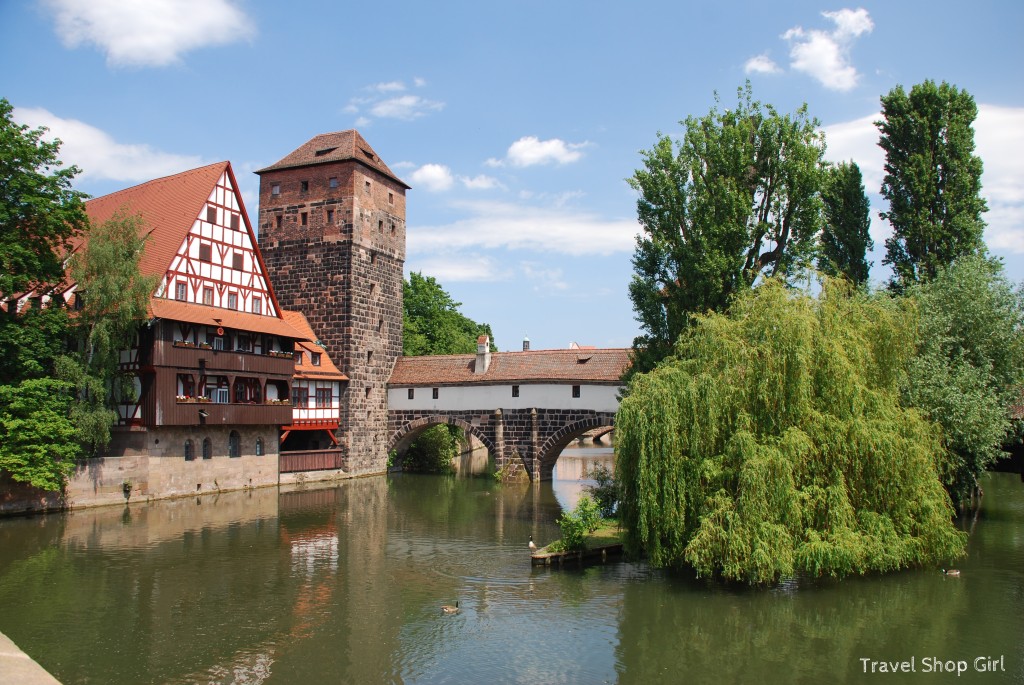
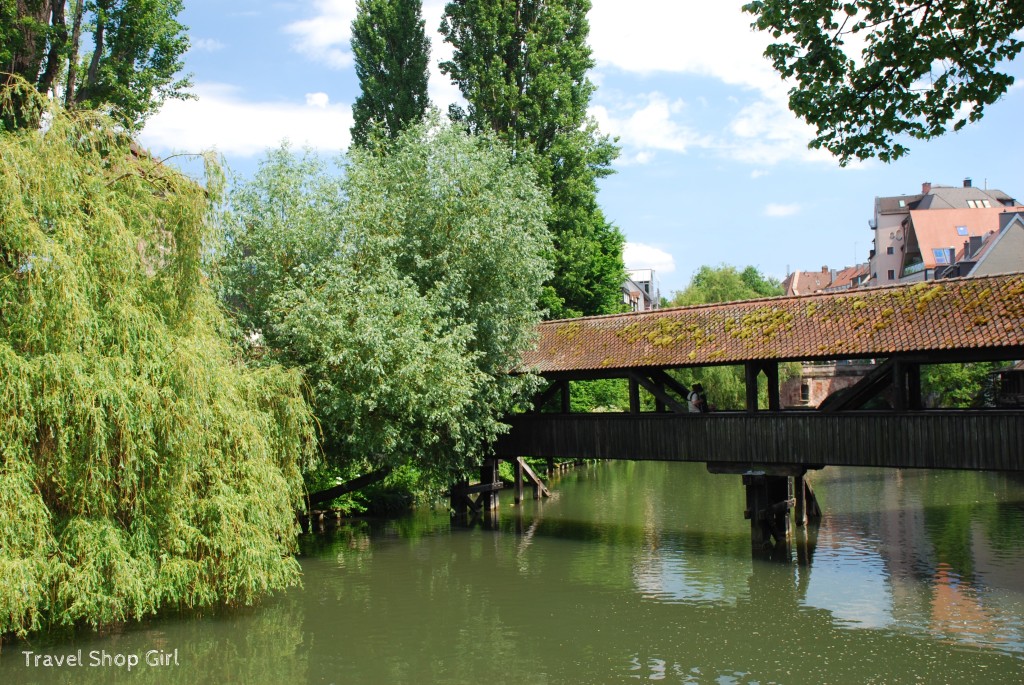



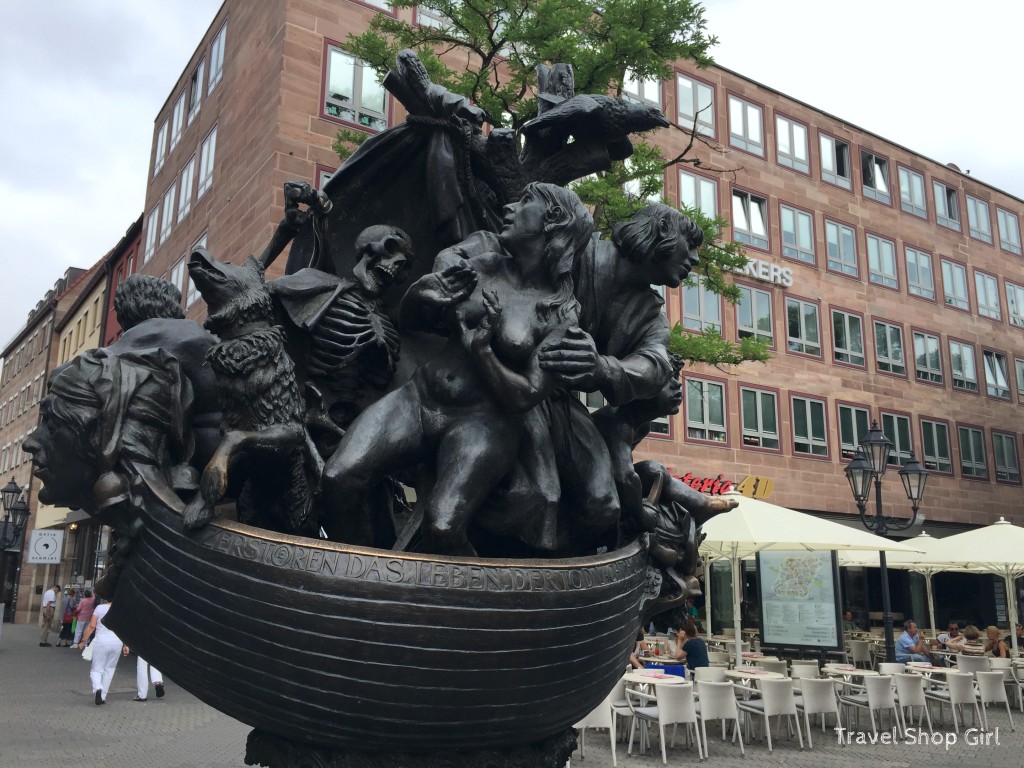
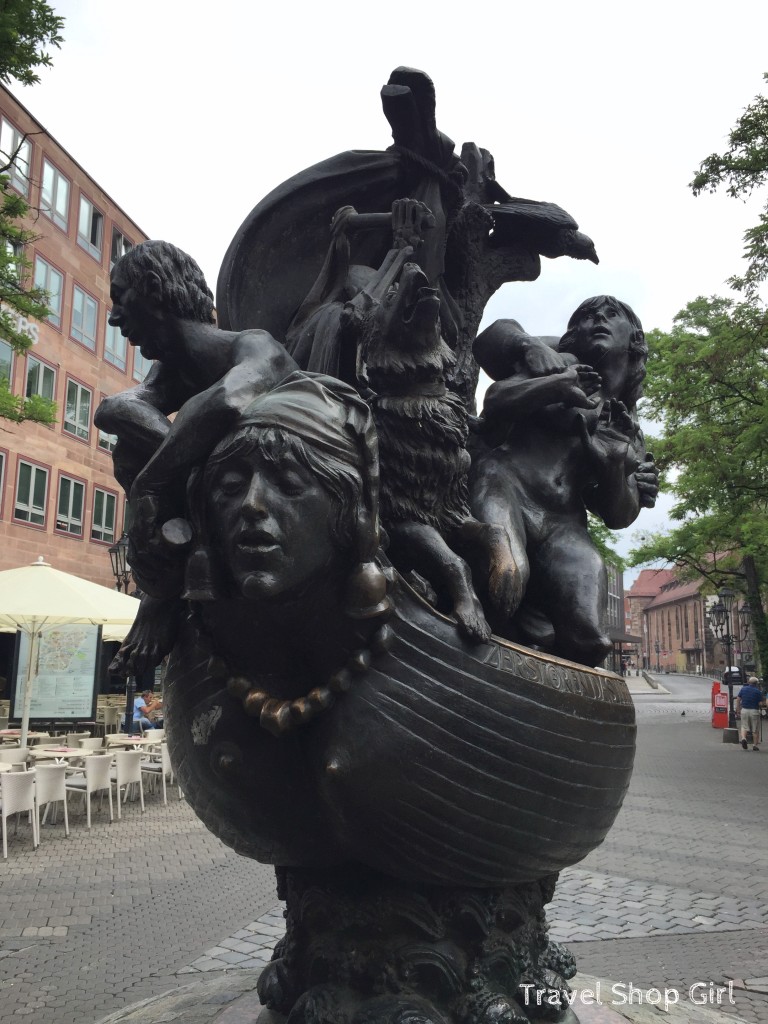
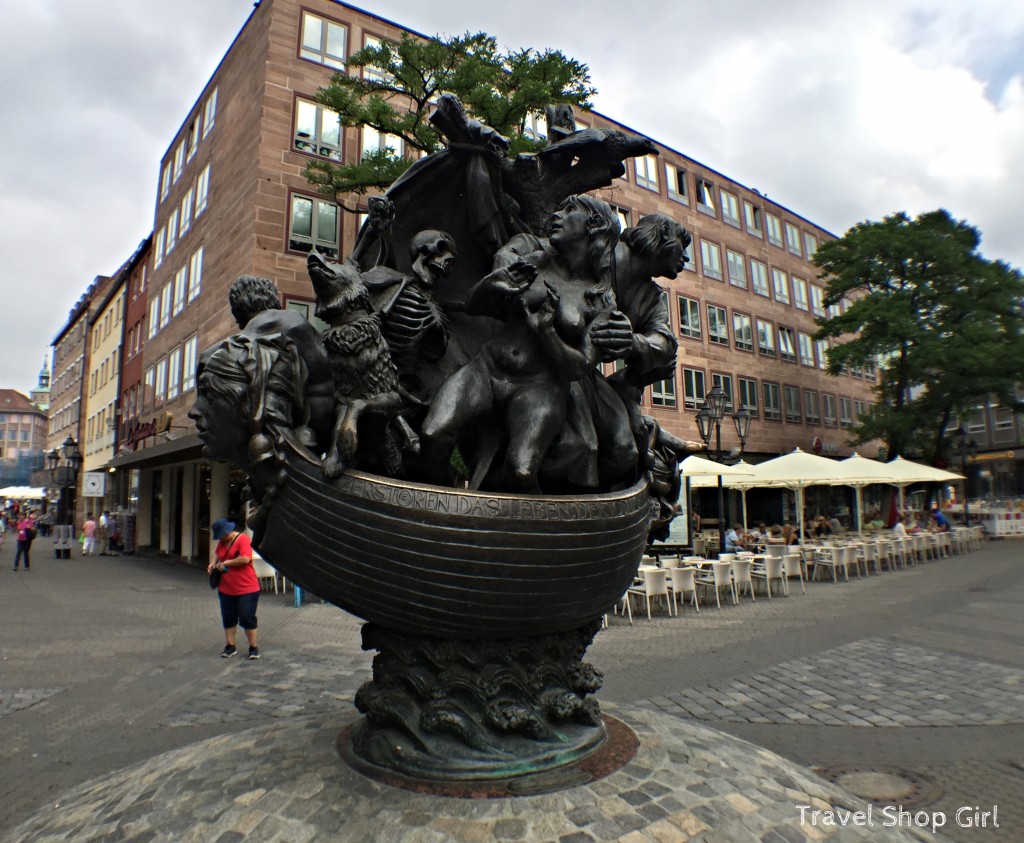
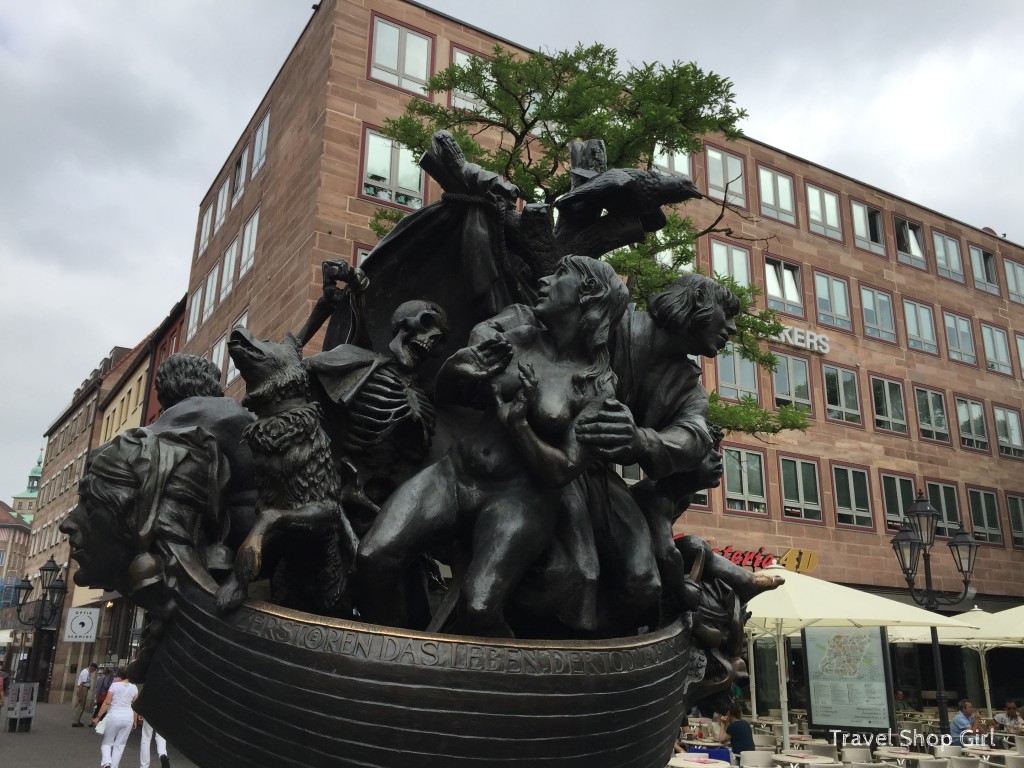
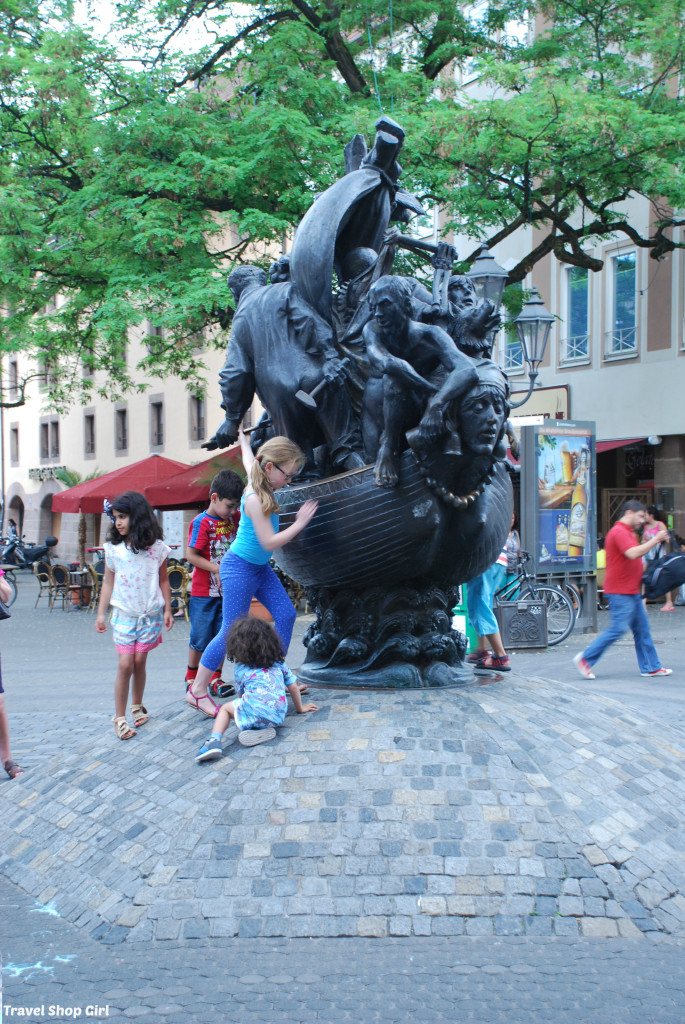
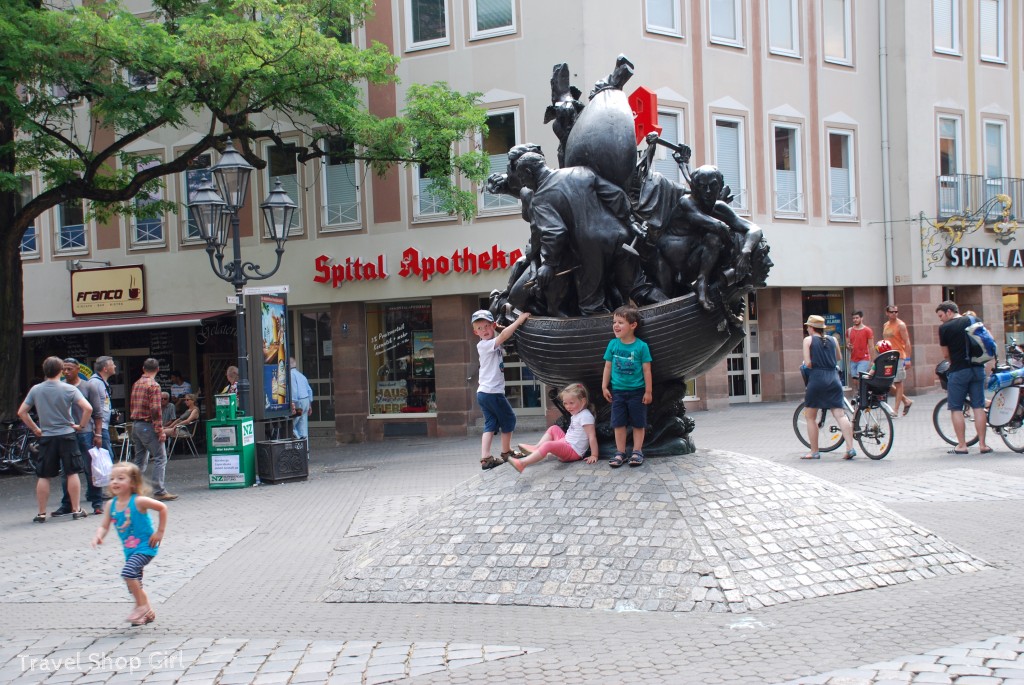
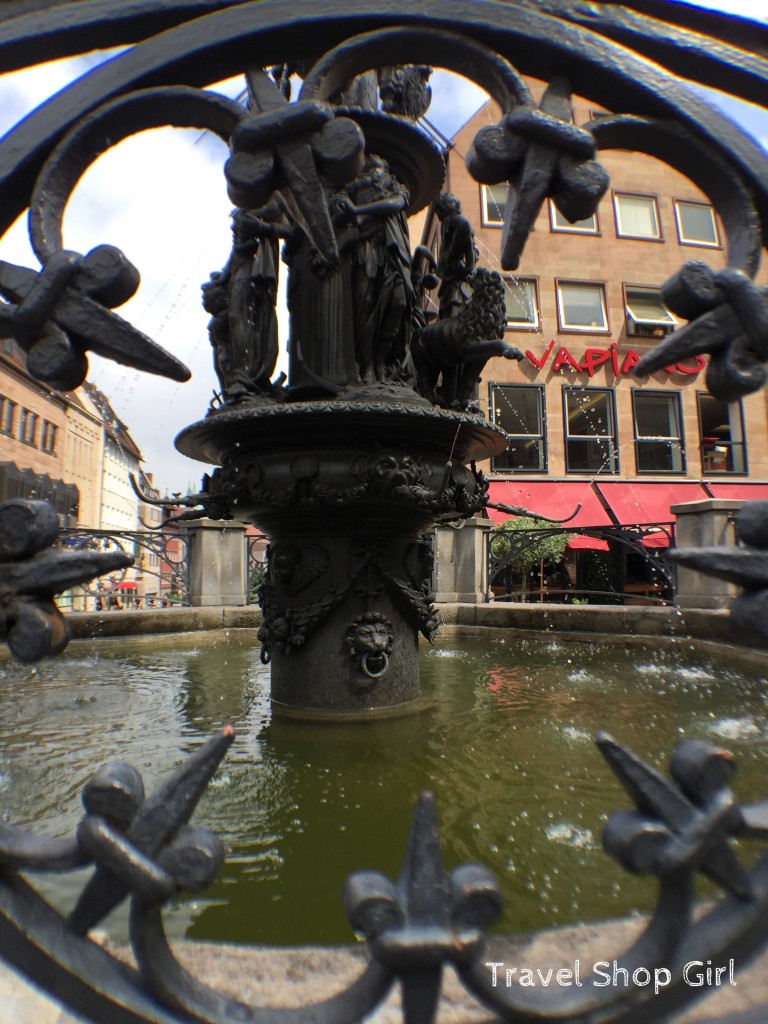
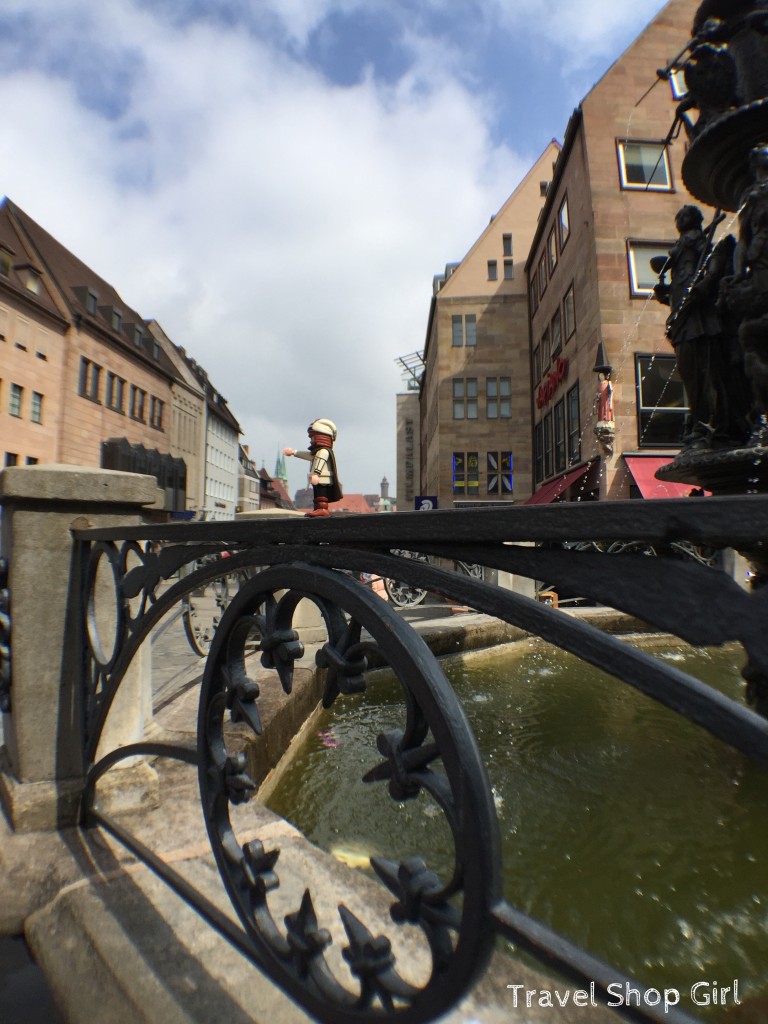
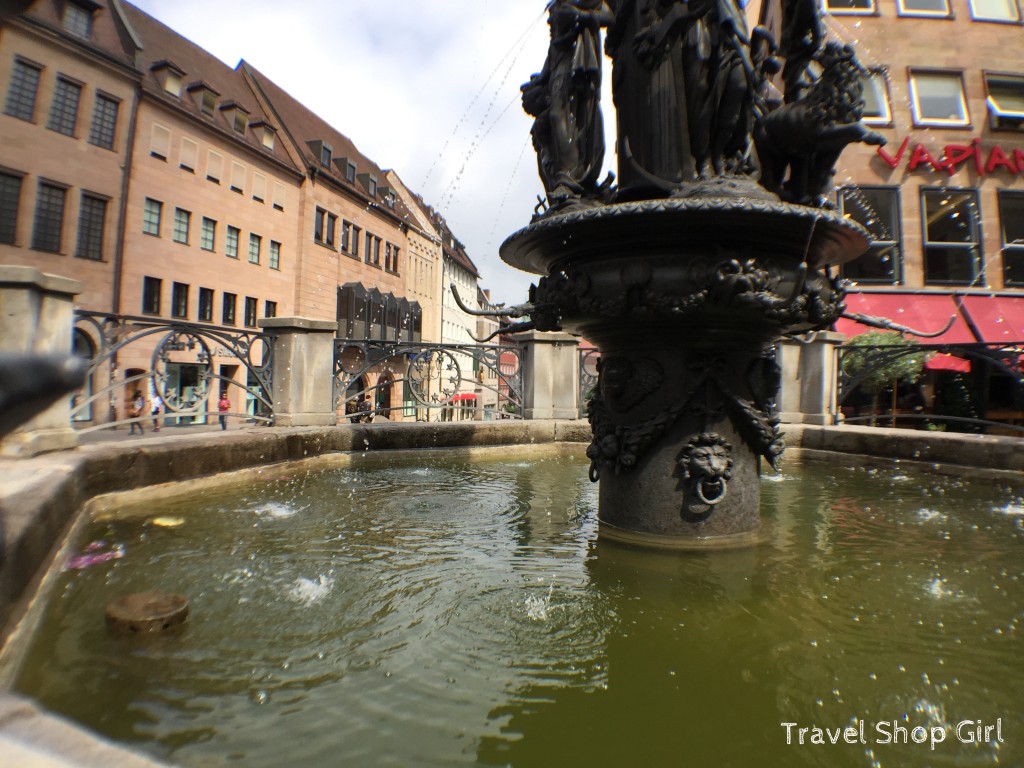
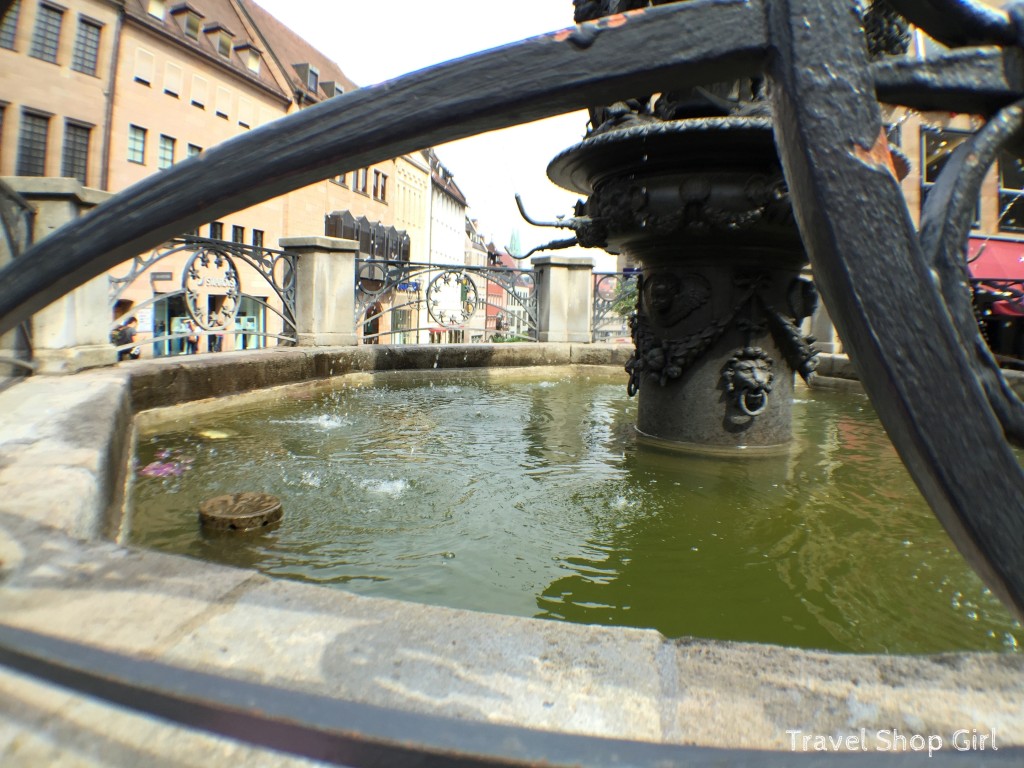
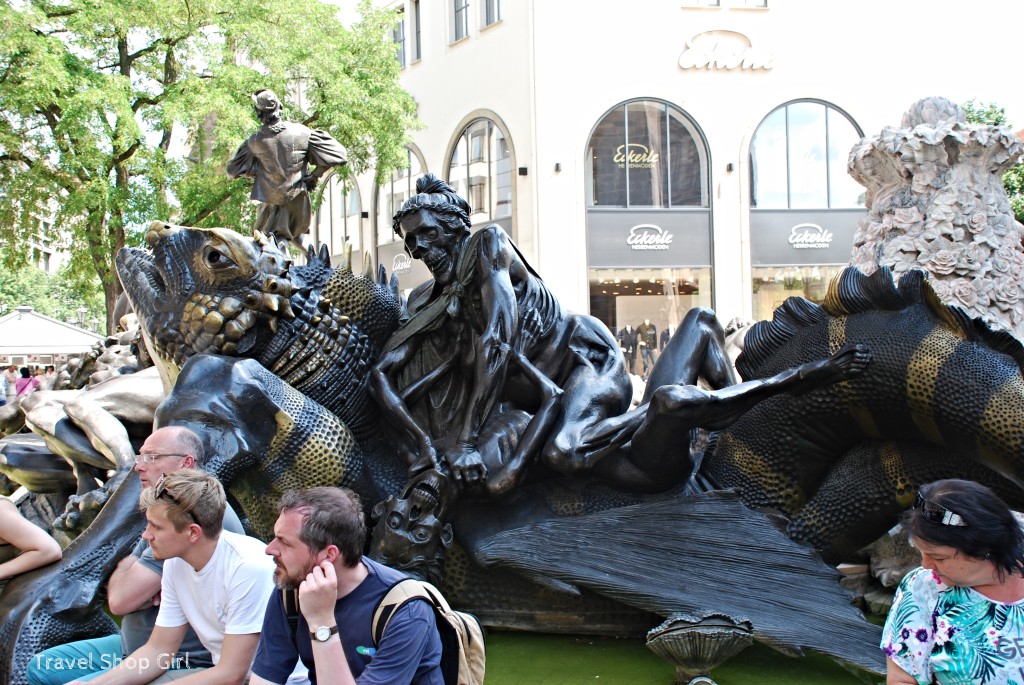
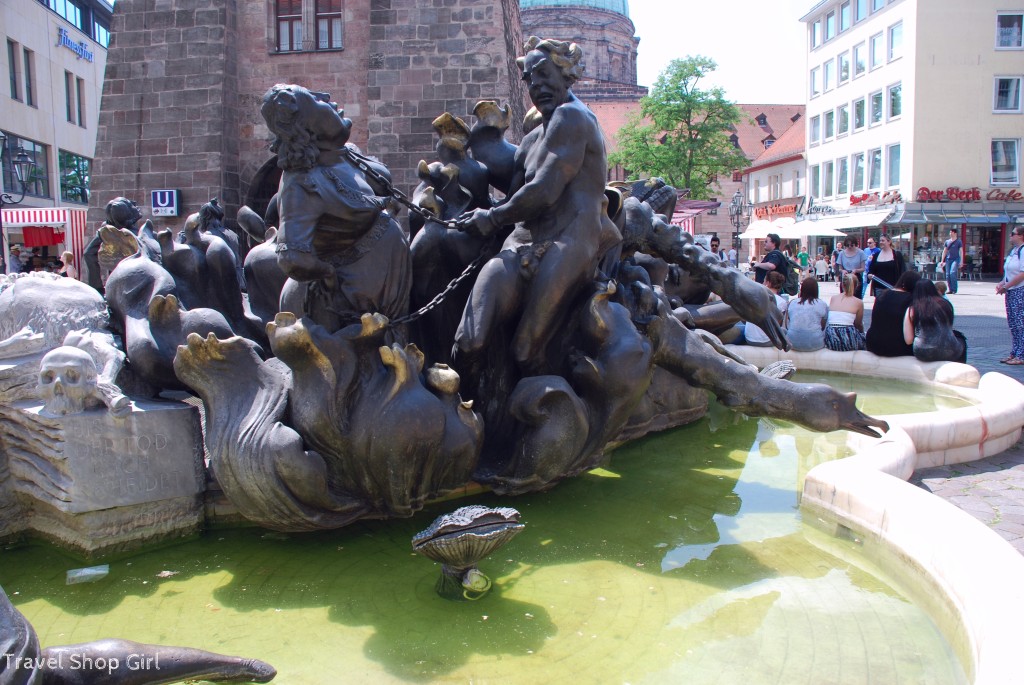
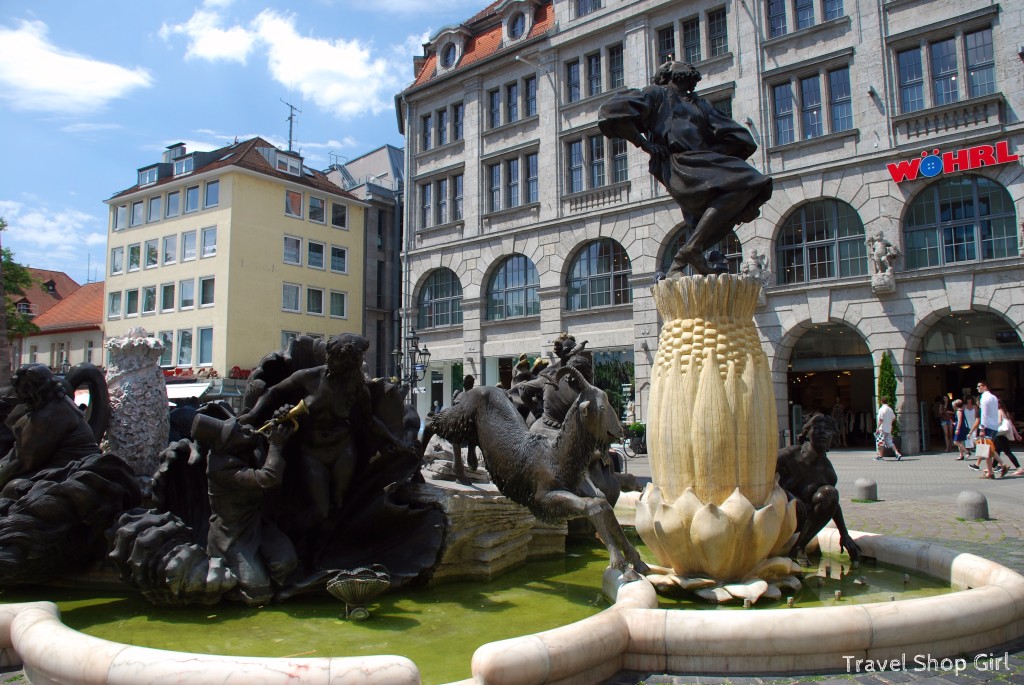
Dear Marian,
very nice report about my hometown and a very interesting blog.
The picture titled “Looking from the Fleisch Bridge over the Pegnitz River to Heilig-Geist-Spital” isn’t from Fleischbridge but from Museumsbrücke, Fleischbrücke is the parallel bridge behind you.
Fleischbrücke (meatbridge) it’s called because the caddle coming from hungary was brought about that bridge to the former slaughterhouse next tho the bridge, that’s the reason for the stone ox on the Fleischbrücke, a typical caddle raised in eastern europe.
Thanks Robert for the correction, which I have now made. Nuremberg has so many bridges! 🙂 Thanks for the information, too, on Fleischbrücke.
Marian Krueger recently posted…Dining and Drinking in Nuremberg, Germany
This sums up pretty well how awesome Nuremberg truly is!
Isn’t it just unbelievable that it has played an important role in European history, then burned down to the ground during World War II and then raised from the ashes to be the thriving, dynamic, charming and historic and very cool city it is today?
I sure love the grand tour of the city with you especially on that hot and sunny weekend. It is unforgettable. Must go back for more 🙂
Karla recently posted…Salsa Cruising in Toronto with Mariposa Cruises